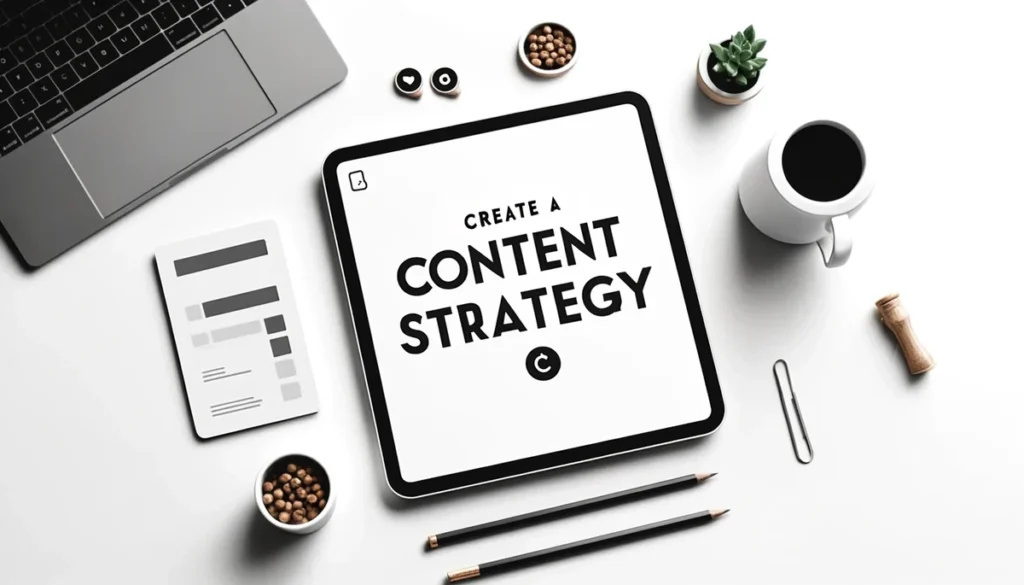The lifeblood of any SaaS startup is its ability to attract and convert customers. In today’s digital landscape, content is king. HubSpot’s 2023 State of Marketing Report found that 82% of marketers are actively using content marketing, proving it is foundational.
Without a steady stream of qualified leads, even the most innovative SaaS product can struggle to gain traction. Simply put, B2B lead generation isn’t just a marketing activity; it’s the engine that drives revenue and growth.
This article serves as your comprehensive guide to generating high-quality leads for your SaaS startup. We’ll delve into proven strategies, practical tactics, and data-backed insights to help you build a robust B2B lead generation machine that fuels your business’s success.
We will cover the importance of understanding your ideal customer, content, SEO, social media, paid ads, email marketing, networking, free trials, and measurement.
- Understanding Your Ideal Customer Profile (ICP) and Buyer Persona
- Content Marketing: Attracting Leads Through Value
- Search Engine Optimization (SEO): Getting Found Online
- Social Media Marketing: Engaging Your Audience
- Paid Advertising (PPC): Driving Targeted Traffic
- Email Marketing: Nurturing Leads and Building Relationships
- Networking and Partnerships: Expanding Your Reach
- Leveraging Free Trials and Freemium Models
- Optimizing Your Strategy
- Conclusion
Understanding Your Ideal Customer Profile (ICP) and Buyer Persona
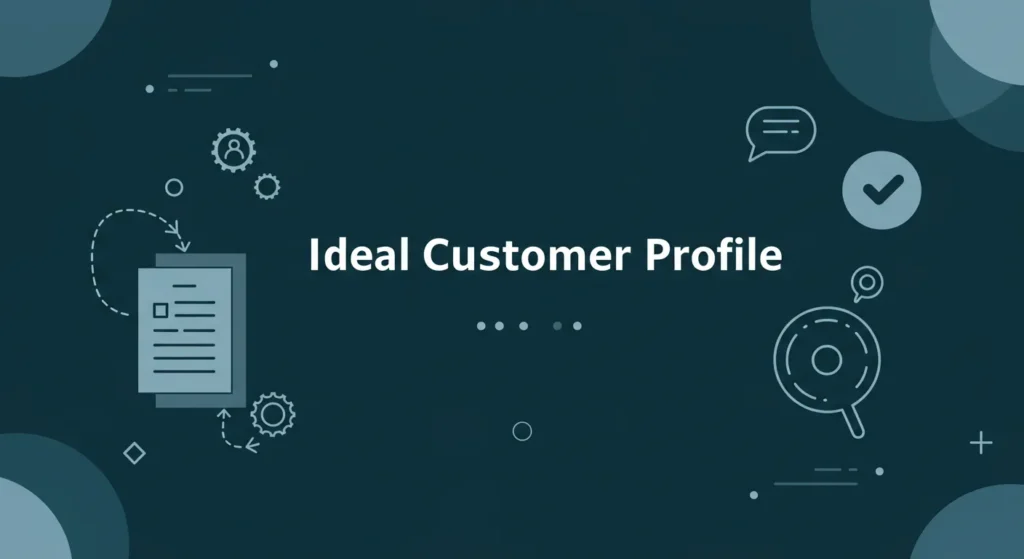
Before you can start generating leads, you need to know exactly who you’re trying to reach. This is where your Ideal Customer Profile (ICP) and buyer persona come in.
1. ICP Definition
Your ICP defines the characteristics of a company or organization that would derive the most value from your SaaS solution. These are your dream customers that will have the longest lifetime value (LTV), have the lowest customer acquisition costs (CAC), and will be your biggest advocates.
2. Developing Your ICP
To create an ICP for your SaaS startup, you need to identify the following:
- Industry/Vertical: Are you targeting specific industries like healthcare, finance, education, or e-commerce? For example, if your SaaS is a project management tool, your ICP might include industries with complex project needs like construction or software development.
- Company Size: Does your product cater to small businesses, enterprises, or a specific segment in between? A CRM for small businesses might target companies with 1-50 employees, while an enterprise solution might target those with 500+.
- Geography: Are there specific regions or countries where your SaaS is most relevant? If you offer a localized marketing automation tool, you might focus on specific geographic markets.
- Budget/Revenue: What is the typical budget or revenue range of companies that can afford your solution? This helps you understand their purchasing power. For instance, a startup offering a budget-friendly analytics tool might target companies with revenues under $1 million.
- Technology Stack: What other technologies do they use or that you integrate with? Identify the tech stack you want to target.
- Pain Points/Challenges: What are the specific problems or challenges that your SaaS solves? If your SaaS offers cybersecurity solutions, you’d target companies facing increasing cyber threats.
- Goals/Objectives: What are these companies trying to achieve? Are they looking to increase efficiency, reduce costs, improve customer satisfaction, or something else?
3. Buyer Persona
Once you have your ICP, you need to create buyer personas – semi-fictional representations of your ideal individual customers within those companies. They represent who is on the purchasing team that will buy, use, and/or influence the decision to buy your software.
Develop buyer personas by defining the following:
- Demographics: Age, job title, education level, experience, location. For example, a buyer persona for a marketing automation platform might be “Marketing Manager Maria,” aged 30-45, with a marketing degree and 5+ years of experience.
- Psychographics: Their motivations, values, interests, and aspirations. What drives their decisions? What are their professional goals?
- Buying Behavior: How do they research and make purchasing decisions? Do they prefer online research, attending conferences, or consulting with peers?
- Pain Points: What are the main problems that your persona experiences that causes them to seek out a solution.
- Goals: What are the goals of your persona. These should be related to the pain points.
Here’s an example of a persona template from Hubspot.
4. The Importance of Alignment
By clearly defining your ICP and buyer personas, you can:
- Focus your marketing efforts: Target the right audience with the right message.
- Personalize your communication: Tailor your content, ads, and emails to resonate with specific needs and preferences.
- Improve lead quality: Attract leads that are more likely to convert into paying customers.
- Optimize your sales process: Equip your sales team with the insights they need to effectively engage with prospects.
Content Marketing: Attracting Leads Through Value
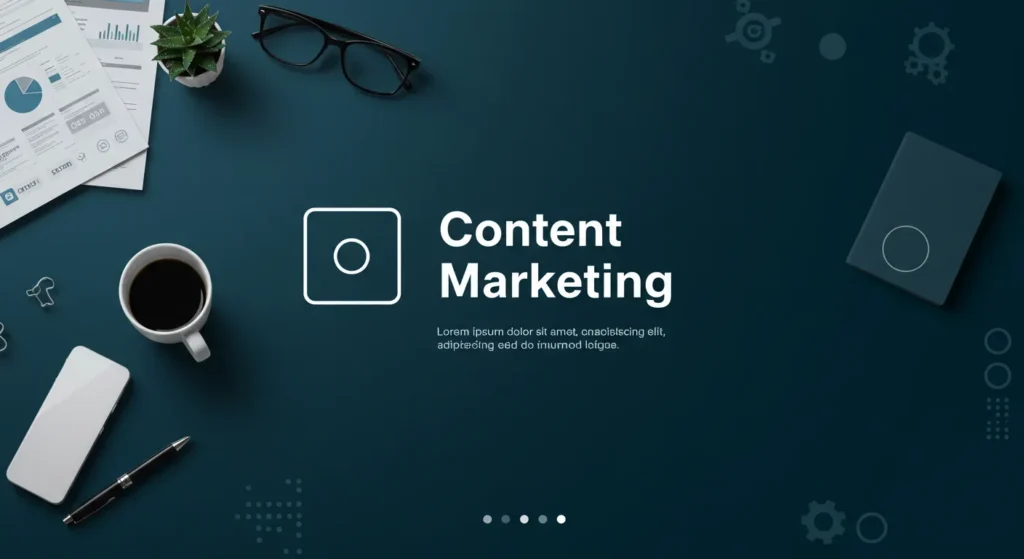
Content marketing is a powerful strategy for attracting and engaging potential customers by creating and distributing valuable, relevant, and consistent content. By establishing yourself as a thought leader and providing solutions to your audience’s problems, you build trust and credibility, naturally drawing in qualified leads. Content marketing is especially important in the SaaS industry, where the buying cycle can be long.
1. Content Formats
- Blog Posts: Regularly publish blog articles that address common pain points, industry trends, and offer valuable insights related to your SaaS product’s niche. Make sure to incorporate relevant keywords for SEO.
- Ebooks/White Papers: Offer in-depth guides or reports on complex topics related to your industry in exchange for contact information. This is a classic lead magnet strategy.
- Webinars: Host live or recorded webinars that provide educational content, product demos, or Q&A sessions with industry experts. These interactive sessions capture leads and build engagement.
- Case Studies: Showcase successful customer stories through case studies that demonstrate the ROI and benefits of your SaaS solution. Highlight how you’ve solved specific problems for clients.
- Infographics: Create visually appealing infographics that summarize data, statistics, or complex processes related to your industry or product.
- Videos: Produce various video content like tutorials, explainer videos, customer testimonials, or behind-the-scenes glimpses of your company culture.
- Podcasts: Launch a podcast featuring interviews with industry experts, discussions on relevant topics, or insights into your SaaS solution.
- Templates and Checklists: Develop templates and checklists to help users understand their own pain points.
2. Content Strategy
- Keyword Research: Conduct thorough keyword research to identify what your target audience is searching for online. Use tools like Ahrefs, SEMrush, or Google Keyword Planner to find relevant keywords with high search volume and low competition.
- Content Calendar: Create a content calendar to plan and schedule your content creation and distribution. This ensures consistency and helps you align your content with specific marketing campaigns or product launches.
- Content Promotion: Don’t just create content; promote it! Share your content on social media, in email newsletters, and through other relevant channels. Consider guest blogging on industry websites to expand your reach.
- Content Repurposing: Take your content and repurpose it into other formats to get the most out of it. For example, take a blog post and turn it into a video, then make smaller videos for social media.
3. Lead Magnets
Offer valuable resources, also known as lead magnets, in exchange for contact information (typically an email address). Examples include:
- Ebooks
- White papers
- Checklists
- Templates
- Webinars
- Free trials (more on this later)
- Product Demos
4. Calls to Action (CTAs)
Every piece of content should include a clear call to action (CTA) that encourages readers to take the next step. This could be subscribing to your newsletter, downloading a resource, requesting a demo, or signing up for a free trial. Use compelling language and visually prominent buttons to maximize conversions.
Search Engine Optimization (SEO): Getting Found Online
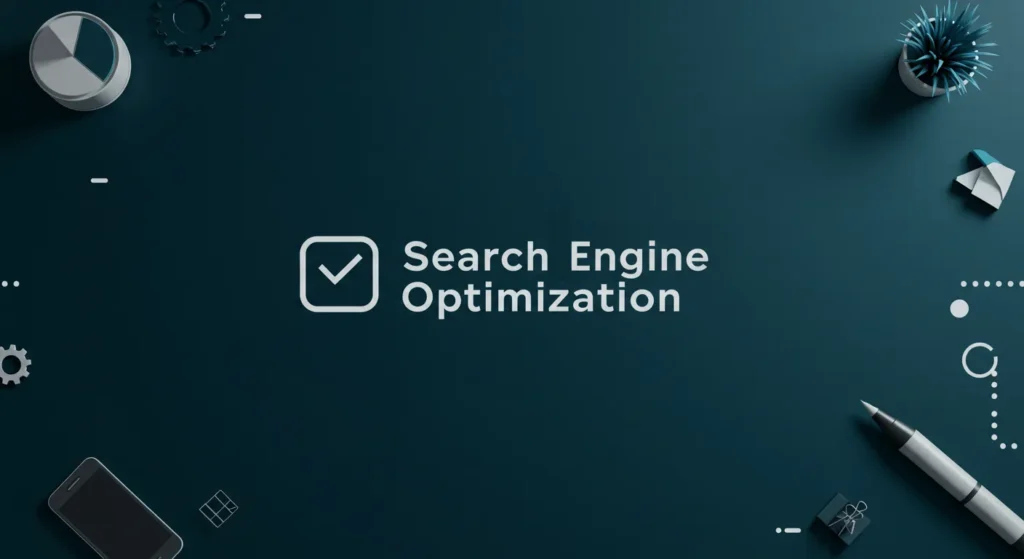
Search Engine Optimization (SEO) is the process of optimizing your website and content to rank higher in search engine results pages (SERPs). When potential customers search for solutions related to your SaaS product, you want your website to be among the first they see.
The top result in Google’s organic search results has an average click-through rate of 27.6%, and the top three results account for 54.4% of all clicks (Source).
1. On-Page SEO
- Keyword Optimization: Strategically incorporate your target keywords into your website content, including page titles, headings, meta descriptions, image alt text, and body copy.
- Website Structure: Create a user-friendly website with a clear and logical structure. Use internal linking to connect related pages and help search engines understand the hierarchy of your site.
- Mobile Optimization: Ensure your website is fully responsive and provides a seamless experience on all devices. Google prioritizes mobile-first indexing.
- Page Speed: Optimize your website’s loading speed. Faster websites tend to rank higher and provide a better user experience. Use tools like Google PageSpeed Insights to identify areas for improvement. You can learn more about page speed here.
2. Off-Page SEO
- Link Building: Earn high-quality backlinks from other reputable websites. Backlinks are like votes of confidence that signal to search engines that your website is authoritative and trustworthy.
- Social Media Signals: Build a strong presence on social media platforms. While social signals may not directly impact rankings, they can increase your brand’s visibility and drive traffic to your website.
- Online PR: Get your SaaS product mentioned in relevant industry publications, blogs, and news articles. This can help you build brand awareness and establish credibility.
3. Technical SEO
- Schema Markup: Implement schema markup (structured data) on your website to help search engines understand the context of your content. This can enhance your search results with rich snippets. Learn more about schema markup here.
- XML Sitemaps: Create and submit an XML sitemap to search engines to help them discover and index all the important pages on your website.
- HTTPS: Ensure your website uses HTTPS, which provides a secure connection for your visitors and is a ranking factor for Google.
4. Local SEO (if applicable)
If your SaaS product targets a specific geographic area, optimize your website for local SEO. Create a Google My Business profile, list your business in relevant online directories, and use location-specific keywords in your content.
Social Media Marketing: Engaging Your Audience
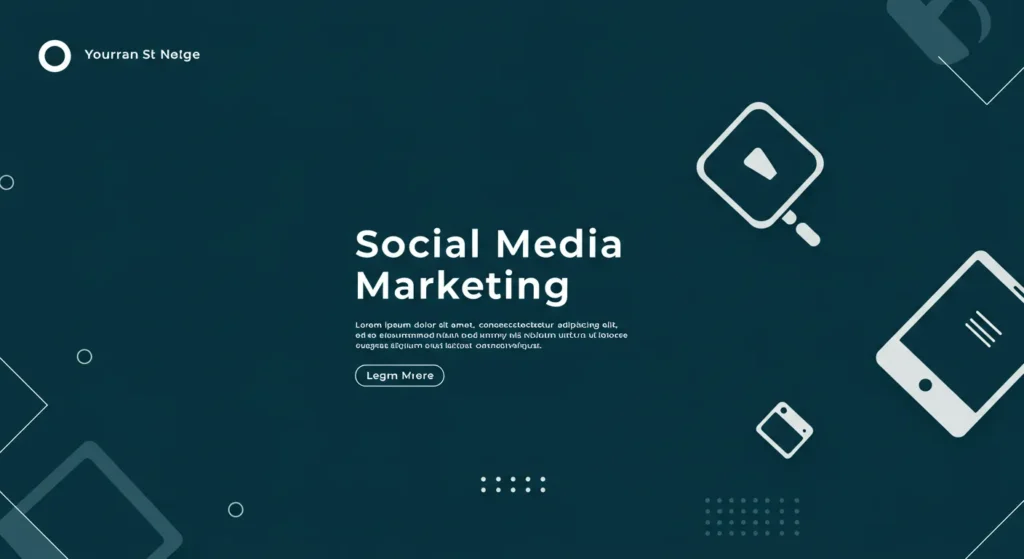
Social media marketing offers a powerful way to connect with your target audience, build brand awareness, and generate leads. By creating engaging content and fostering a community, you can establish your SaaS company as a trusted resource and attract potential customers.
1. Platform Selection
Choose the right social media platforms based on where your target audience spends their time. For B2B SaaS, LinkedIn is often a primary focus, while Twitter, Facebook, and even Instagram can be valuable depending on your industry and target demographic.
2. Content Sharing
Share a mix of your own content (blog posts, articles, videos) and curated content from other reputable sources. Provide valuable insights, tips, and industry news that resonate with your audience.
3. Community Building
Actively engage with your followers. Respond to comments and messages promptly, participate in relevant conversations, and run contests or polls to encourage interaction.
4. Paid Social Media Advertising
Consider running targeted ads on social media platforms to reach a wider audience. Social media advertising allows you to target users based on demographics, interests, job titles, and other criteria. Utilize retargeting to advertise to users who have already interacted with your brand.
5. Social Listening
Monitor social media for mentions of your brand, competitors, and industry keywords. This helps you understand the conversation around your industry and identify potential leads or opportunities for engagement. Tools like Hootsuite or Sprout Social can help.
Paid Advertising (PPC): Driving Targeted Traffic
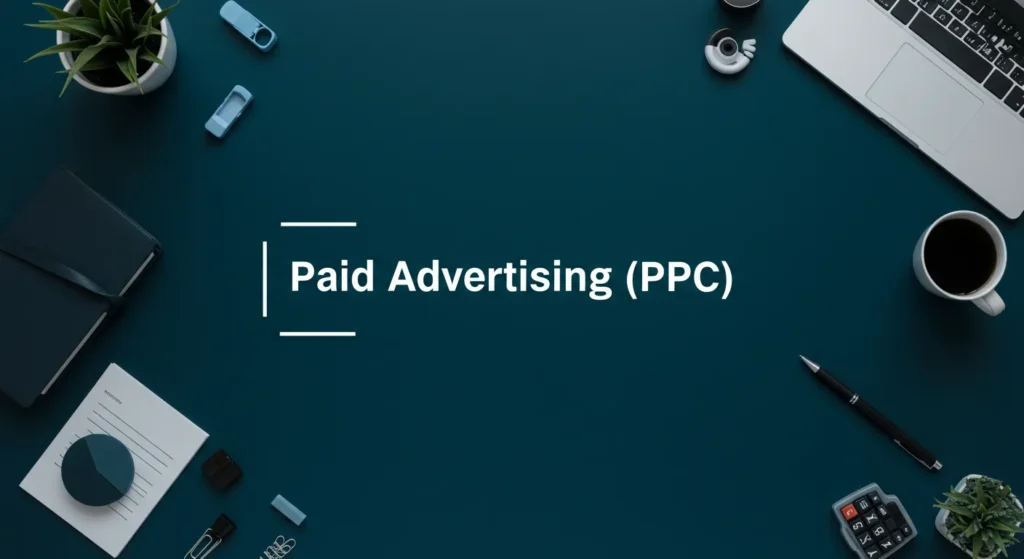
Paid advertising, also known as pay-per-click (PPC), allows you to drive targeted traffic to your website by bidding on keywords and displaying ads on search engines and social media platforms. This can be a highly effective way to generate leads quickly, especially when combined with other strategies.
1. Search Engine Marketing (SEM)
- Google Ads: Run targeted ads on Google’s search results pages. You can bid on specific keywords related to your SaaS product and set a budget for your campaigns.
- Bing Ads: Similar to Google Ads, but on the Bing search engine. While Bing has a smaller market share, it can still be a valuable source of leads, especially if your target audience uses it.
2. Social Media Advertising
- Facebook Ads: Target users based on demographics, interests, behaviors, and custom audiences. Facebook’s vast user base and detailed targeting options make it a powerful platform for reaching potential customers.
- LinkedIn Ads: Reach professionals based on job title, industry, company size, and other criteria. LinkedIn is particularly effective for B2B lead generation.
- Twitter Ads: Target users based on interests, keywords, followers of specific accounts, and other criteria. Twitter can be a good platform for promoting content and engaging in real-time conversations.
3. Display Advertising
Run banner ads on relevant websites across the internet. Display advertising can help you increase brand awareness and reach a wider audience.
4. Retargeting
Show ads to users who have previously visited your website or interacted with your content. Retargeting is a highly effective way to re-engage potential customers who have already shown interest in your SaaS product.
5. Budgeting and Optimization
Set a clear budget for your PPC campaigns and track your results closely. Continuously optimize your campaigns by adjusting your bids, keywords, ad copy, and targeting to improve performance and maximize ROI. Utilize A/B testing to see which ads perform best.
Email Marketing: Nurturing Leads and Building Relationships
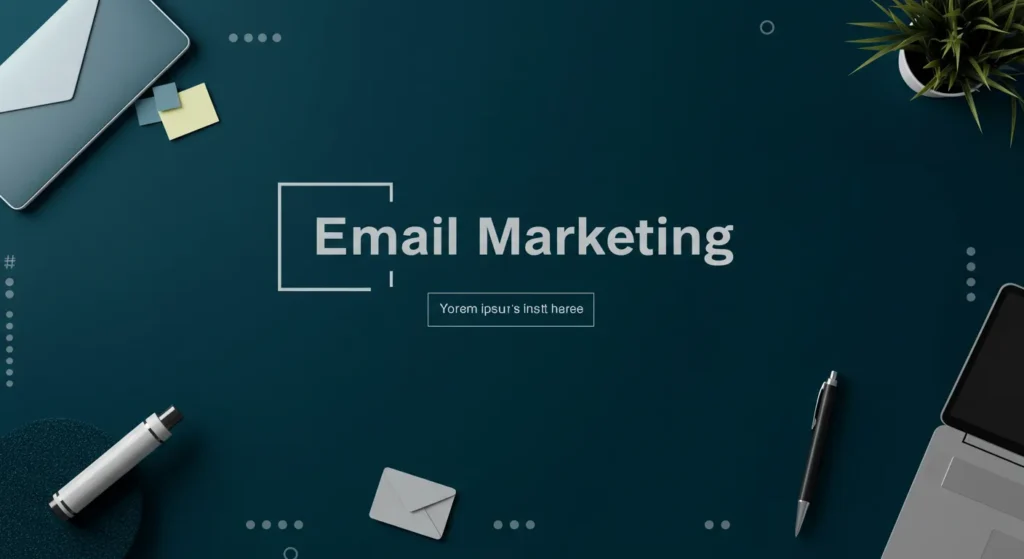
Email marketing remains one of the most effective channels for nurturing leads and building relationships with potential customers. By delivering targeted and personalized email messages, you can guide prospects through the sales funnel and convert them into paying customers. 99firms reports that for every $1 spent on email marketing, you can expect an average return of $42.
1. Building an Email List
The foundation of successful email marketing is a high-quality email list. Offer valuable incentives, such as lead magnets (ebooks, webinars, free trials), in exchange for email addresses. Utilize popups, forms, and landing pages to build your list.
2. Email Segmentation
Segment your email list into smaller groups based on demographics, interests, behavior, or stage in the sales funnel. This allows you to send more targeted and relevant messages to each segment.
3. Email Automation
Use email automation to send automated email sequences to nurture leads and guide them through the sales funnel.
- Welcome Series: Automatically send a series of welcome emails to new subscribers, introducing them to your brand and providing valuable content.
- Onboarding Series: Send users an onboarding series to help them become product experts.
- Drip Campaigns: Create drip campaigns that deliver a series of emails over time, based on user behavior or specific triggers (e.g., downloading an ebook, attending a webinar).
4. Email Content
Provide a mix of valuable content, product updates, promotional offers, and company news. Focus on delivering value to your subscribers and building a relationship with them.
5. A/B Testing
Experiment with different subject lines, email copy, CTAs, and email designs to improve your open rates, click-through rates, and conversions.
Networking and Partnerships: Expanding Your Reach
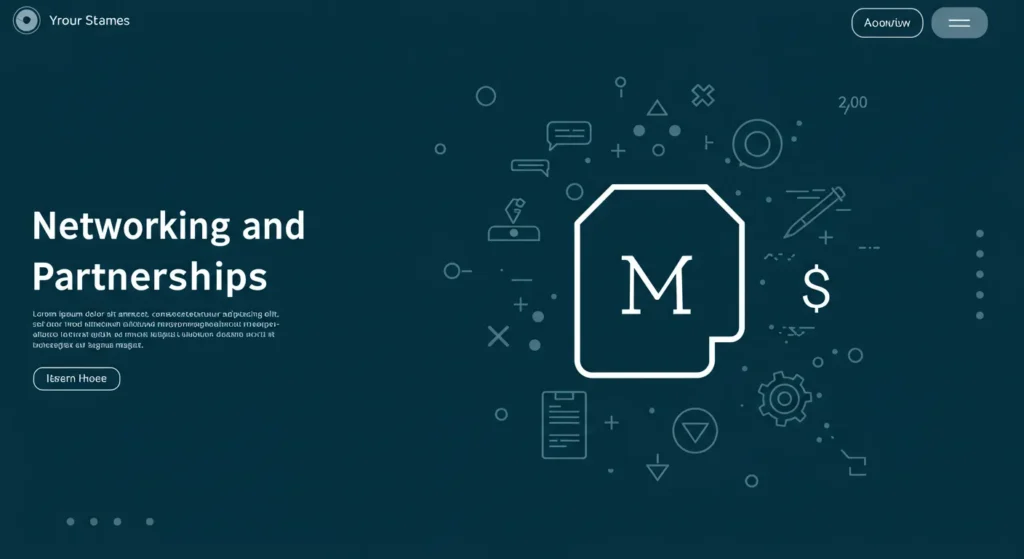
Networking and building strategic partnerships can significantly expand your reach and generate valuable leads. By connecting with other businesses and industry professionals, you can tap into new audiences and gain access to potential customers who might not otherwise discover your SaaS product.
1. Industry Events
Attend conferences, trade shows, and meetups related to your industry. These events provide opportunities to network with potential customers, partners, and industry influencers.
2. Online Communities
Participate in relevant online forums, groups, and communities where your target audience hangs out. Share your expertise, answer questions, and build relationships with potential leads.
3. Strategic Partnerships
Identify complementary businesses that offer products or services that are relevant to your target audience but don’t directly compete with you. Collaborate on co-marketing efforts, such as joint webinars, guest blogging, or cross-promoting each other’s products or services.
4. Influencer Marketing
Partner with industry influencers who have a large following among your target audience. Influencers can help you promote your SaaS product to their followers and build brand credibility.
Leveraging Free Trials and Freemium Models
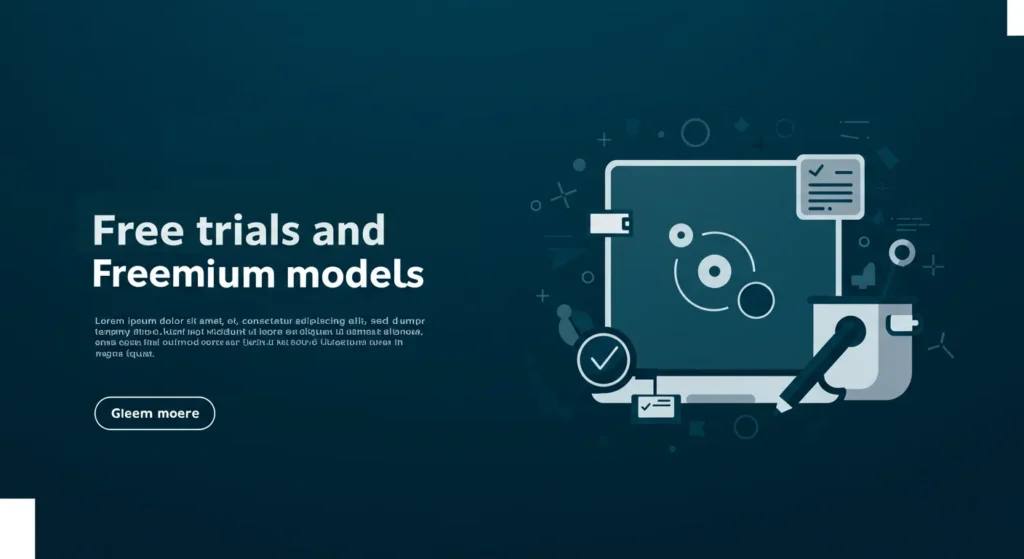
Offering a free trial or a freemium version of your SaaS product is a highly effective B2B lead generation strategy. It allows potential customers to experience the value of your product firsthand before making a purchase decision.
1. Free Trial
Provide a limited-time free trial of your SaaS product, typically for 7, 14, or 30 days. This allows users to explore the features and benefits of your product and see if it meets their needs. Decide between an opt-in or opt-out free trial. An opt-in free trial does not require a credit card to sign up, where an opt-out trial does.
2. Freemium Model
Offer a basic version of your product for free, with the option to upgrade to a paid plan for more advanced features or usage limits. The freemium model is particularly effective for SaaS products with a low marginal cost of serving additional users.
3. Onboarding
Provide a seamless onboarding experience for free trial and freemium users. Guide them through the key features of your product, provide helpful tips and resources, and encourage them to engage with your product regularly.
Optimizing Your Strategy
To ensure the effectiveness of your B2B lead generation efforts, it’s crucial to track your results, analyze your data, and continuously optimize your strategy.
1. Key Performance Indicators (KPIs)
- Website Traffic: Track the number of visitors to your website, as well as their sources (organic search, social media, paid ads, etc.).
- Lead Conversion Rate: Measure the percentage of website visitors who convert into leads (e.g., by filling out a form, signing up for a free trial).
- Marketing Qualified Leads (MQLs): Identify leads that meet certain criteria based on demographics, behavior, or engagement with your marketing materials. These leads are considered more likely to become customers.
- Sales Qualified Leads (SQLs): MQLs that have been further qualified by the sales team based on their level of interest and readiness to buy.
- Customer Acquisition Cost (CAC): Calculate the cost of acquiring a new customer by dividing your total marketing and sales expenses by the number of new customers acquired.
- Customer Lifetime Value (CLTV): Estimate the total revenue a customer will generate over their entire relationship with your business.
- Return on Investment (ROI): Measure the overall profitability of your B2B lead generation efforts by comparing the revenue generated from new customers to the cost of acquiring them.
2. Tools
- Google Analytics: A free and powerful tool for tracking website traffic, user behavior, and conversions.
- CRM Software: Use a CRM (Customer Relationship Management) system like Salesforce, HubSpot, or Pipedrive to manage customer relationships, track lead progress, and measure sales performance.
- Marketing Automation Platforms: Platforms like Marketo, Pardot, or ActiveCampaign can help you automate marketing tasks, track campaign performance, and nurture leads.
3. A/B Testing
Continuously test different elements of your B2B lead generation campaigns, such as ad copy, landing page design, email subject lines, and CTAs, to identify what works best and optimize your results.
4. Regular Analysis and Optimization
Regularly analyze your data to identify trends, patterns, and areas for improvement. Use these insights to adjust your strategy, refine your targeting, and optimize your campaigns for better performance.
Conclusion
Generating leads for your SaaS startup is a continuous journey, not a destination. It requires a multifaceted approach and a commitment to ongoing optimization. By implementing the strategies outlined in this article – from defining your ICP and creating valuable content to leveraging SEO, paid advertising, and email marketing – you can build a powerful B2B lead generation engine.
Remember, the SaaS landscape is always changing. Stay informed, experiment with new tactics, and analyze your results.

